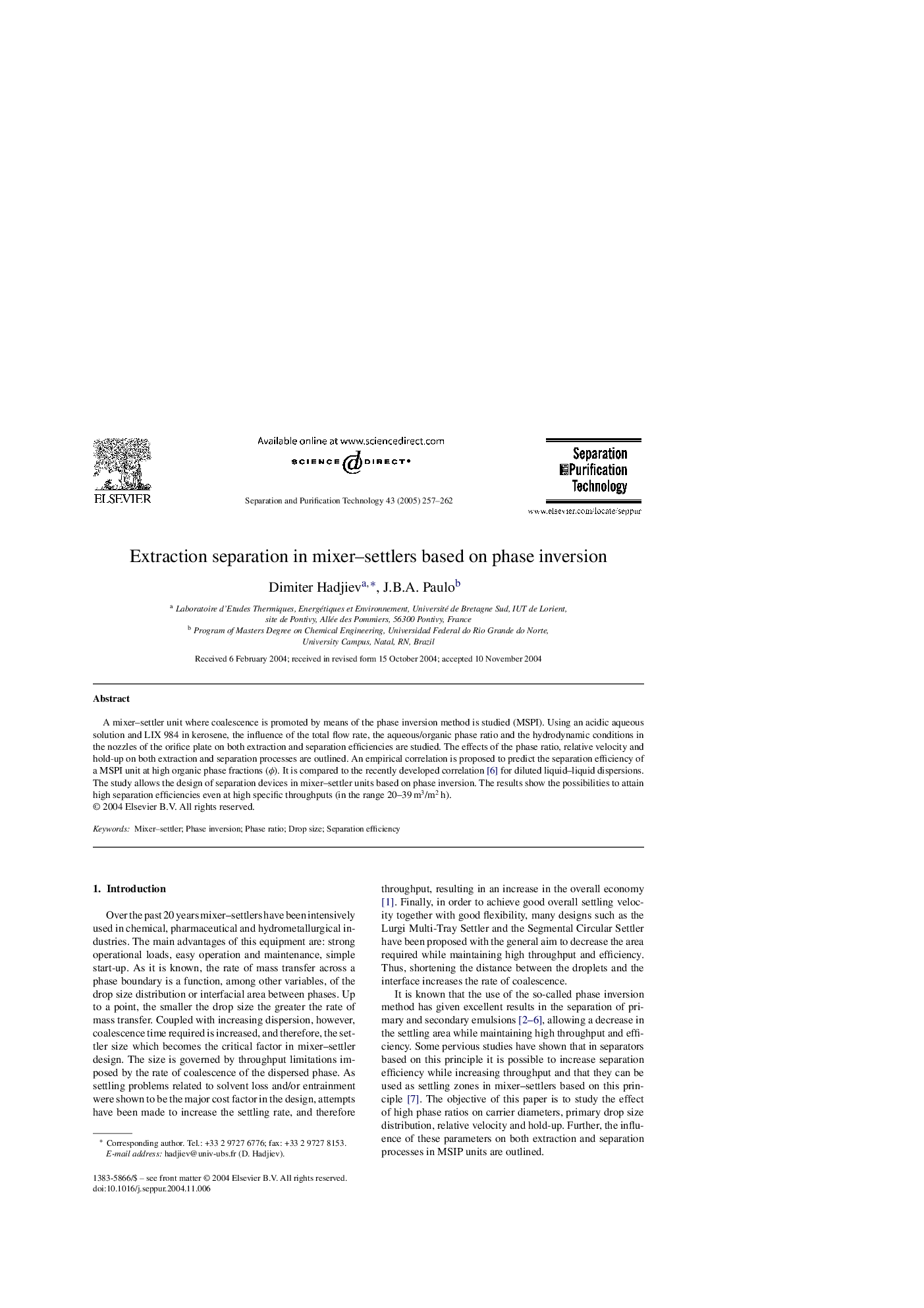| Article ID | Journal | Published Year | Pages | File Type |
|---|---|---|---|---|
| 10389829 | Separation and Purification Technology | 2005 | 6 Pages |
Abstract
A mixer-settler unit where coalescence is promoted by means of the phase inversion method is studied (MSPI). Using an acidic aqueous solution and LIX 984 in kerosene, the influence of the total flow rate, the aqueous/organic phase ratio and the hydrodynamic conditions in the nozzles of the orifice plate on both extraction and separation efficiencies are studied. The effects of the phase ratio, relative velocity and hold-up on both extraction and separation processes are outlined. An empirical correlation is proposed to predict the separation efficiency of a MSPI unit at high organic phase fractions (Ï). It is compared to the recently developed correlation [6] for diluted liquid-liquid dispersions. The study allows the design of separation devices in mixer-settler units based on phase inversion. The results show the possibilities to attain high separation efficiencies even at high specific throughputs (in the range 20-39Â m3/m2Â h).
Related Topics
Physical Sciences and Engineering
Chemical Engineering
Filtration and Separation
Authors
Dimiter Hadjiev, J.B.A. Paulo,
